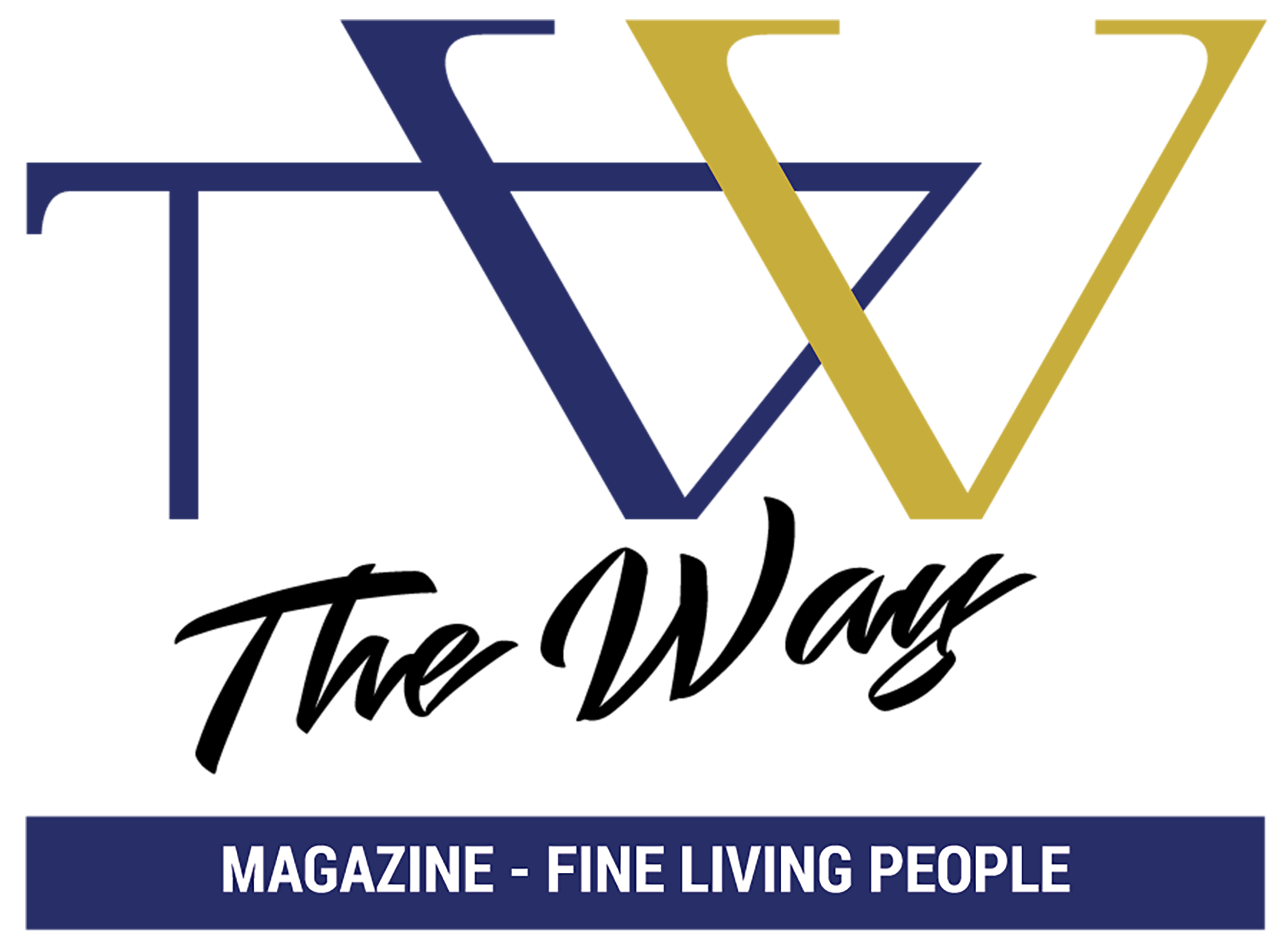Justin Thomas era un fotografo del giornale Sounds quando arrivò al Rum Runner club di Birmingham per immortalare nel 1981 i Duran Duran. La band inglese stava muovendo i primi passi e Justin avrebbe seguito la fase di decollo della carriera dei Fab Five per tre anni. Concerti, backstage, incontri e viaggi sono tutti documentati in un libro di cui vi anticipiamo alcune immagini in bianco e nero, che si chiamerà Kings of the Dark Moon, in uscita per Hanging Around Books. Ne sentirete parlare presto (è attesa a breve la data di lancio) e per ora vi diamo l’anteprima della copertina e il resoconto della bella chiacchierata con Justin, custode di 40 anni di racconti in immagini di musicisti punk, rock, new wave e britpop.
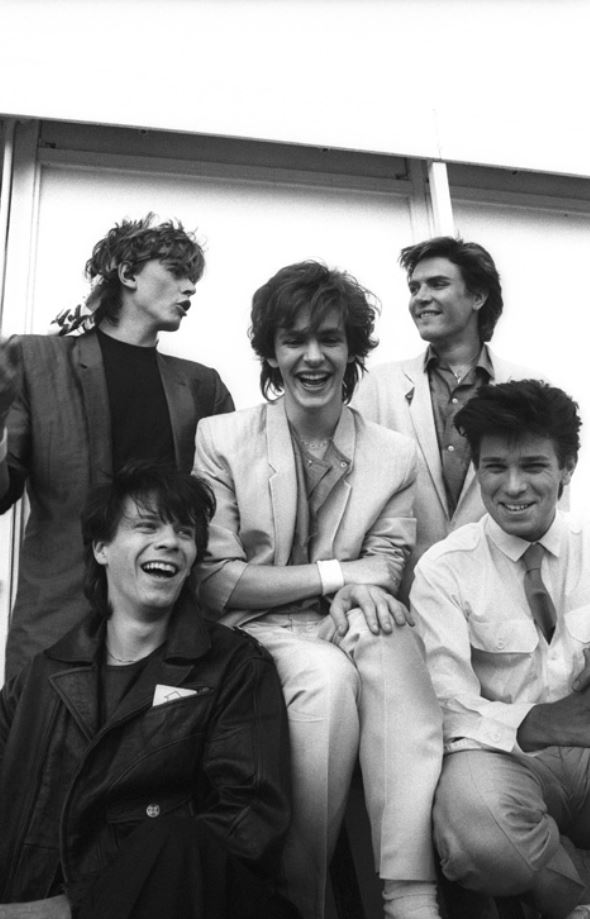
Justin è nato a Carnarfon in Galles e ha fotografato autentiche leggende internazionali: The Clash, The Rolling Stones, Stevie Wonder/Marvin Gaye/Diana Ross, Prince e Michael Jac, Led Zeppelin, Bob Marley, Sex Pistols.
“When You Hear The Music Trouble Disappear” era il nome della tua mostra a Londra di qualche tempo fa. Quando senti musica i problemi vanno via, è così che ti sentivi quando fotografavi gli artisti?
“WYHTMTD” è in realtà un verso della canzone dei Rolling Stones “Can you hear the Music?” dall’album ‘Goat’s Head Soup’. L’ho usato come titolo della mostra alla Graffik Gallery di Notting Hill perché adoro gli Stones ma anche perché la musica per me è stata costante motivo di piacere, sorpresa ed eccitazione. Mi sento davvero così quando ascolto musica ma non quando fotografo gli artisti. Anzi lì è il contrario, lì il problema sorge!
Perché hai iniziato a fare il rock photographer?
La mia carriera è stata un incidente felice, non avevo idea di cosa fare da giovane. Non c’erano corsi di studio dei media e non avevo mai sentito nominare un lavoro “Rock photographer” quando ero a scuola. Da quando avevo 10 anni ho iniziato a spendere la paghetta in giornali musicali come Melody Maker, NME, Rave, quindi incoscientemente stavo avvicinandomi al piacere di guardare le foto dei miei idoli più di quanto non pensassi.
Credi che l’atteggiamento nei confronti della fotografia musicale sia cambiato ora che c’è l’online?
La differenza principale tra ora e prima è l’assenza di rispetto per il copyright. Quando davi una foto a una rivista era solo per quella non la ritrovavi senza credito e senza pagamenti in altre pubblicazioni, come succede ora con l’online. Per non parlare della decadenza del music business e di tutta l’arte in generale, forse Internet è una delle invenzioni peggiori da questo punto di vista, perché sta cambiando l’interazione umana. Mi dà più piacere consultare Mojo che stare al computer. Devo avere la carta tra le mie mani, è un fattore generazionale, ho bisogno di sentire l’odore della stampa e la granatura delle foto.
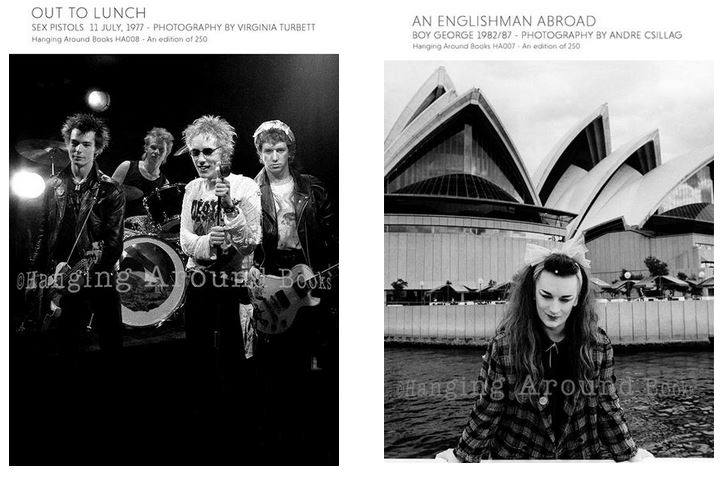
Chi sono i fotografi che ammiri?
Tutti quelli con cui sono cresciuto durante l’epoca d’oro degli anni 60 e 70: Jim Marshall, Baron Wolman, Henry Diltz, Barry Feinstein, Michael Cooper, Dezo Hoffman, Ethan Russell, Michael Putland, Bob Gruen.
Sei amico delle star che fotografi?
Non diventi realmente amico delle star e dei tuoi colleghi, al massimo si condividono dei momenti di svago e piccoli frammenti assieme. Ma quando finisce tutto torni a casa e vai dai tuoi veri amici. Molti fotografi si intrappolano in questa vita con le celebrità, forse perché pensano che siccome trascorrono del tempo con le star diventano intimi con loro. Forse alcuni ci riescono ma a me piace mantenere i ricordi.
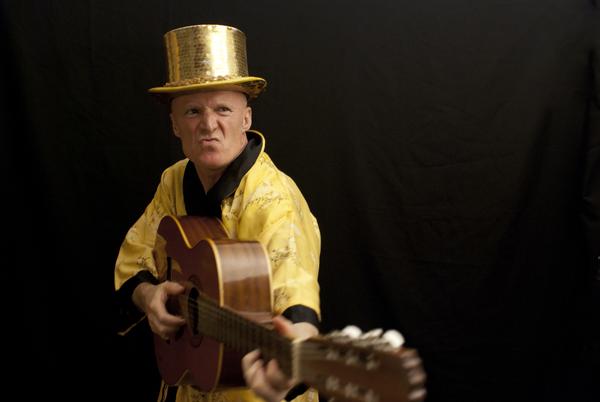
Hai immortalato tutti i generi dal Punk al Grunge. Com’è cambiato il pubblico della musica dagli anni 70 a oggi?
La cosa più ovvia è che all’epoca non si registrava niente, si viveva il momento, è la differenza tra ieri e oggi. Fumavamo canne e ci ubriacavamo, ballavamo, sudavamo e saltavamo. Si usavano droghe e tutte queste cose ci contrapponevano ai vecchi eterosessuali, noi eravamo i pazzi giovani. Era una tribù, c’era un necessario divario generazionale. Oggi odio andare ai concerti, sembra una gita famigliare con mamma e papà. Non ti puoi muovere, devi rimanere al tuo posto, i prezzi sono alti, tutti stanno col cellulare in aria. Tanti divieti: non fumare, non ballare, drink di plastica dai prezzi esagerati.
Per il libro dei Duran perché hai scelto il titolo Kings of the dark moon?
Non è da prendere troppo letteralmente perché nel film Barbarella, da cui i Duran Duran hanno preso il nome, Jane Fonda è segretamente la figlia del “King of the Dark Moon”. Non è che penso che la loro immagina sia stata dark, per me loro sono stati solo e sempre glamorous.
Che ricordi hai e come mai hai custodito i tesori che vediamo in questo servizio per tanto tempo?
Ricordo la prima volta che li ho incontrati mi dissero con orgoglio che nessuno di loro indossava jeans. I Duran Duran furono tra i primi a sfruttare il potenziale di Mtv facendo video costosi in paesi tropicali con donne svestite. Solo ora che ho rallentato la mia attività di fotografo mi sono dedicato al recupero. Ho anche scattato sui set di film per 20 anni. Ora sto digitalizzando tutti i negativi a colori e in bianco e nero e sono grato di aver tenuto il copyright di ogni scatto. Ho sempre lavorato da freelance e non ho mai avuto contratti con nessuno. Per un fotografo è la cosa più importante, è come le royalty per i musicisti. All’inizio mi sono fatto convincere da un grande fotografo, Robert Ellis, che mi suggerì di conservare l’uso delle foto per il tempo che sarebbe venuto. E l’ho fatto.
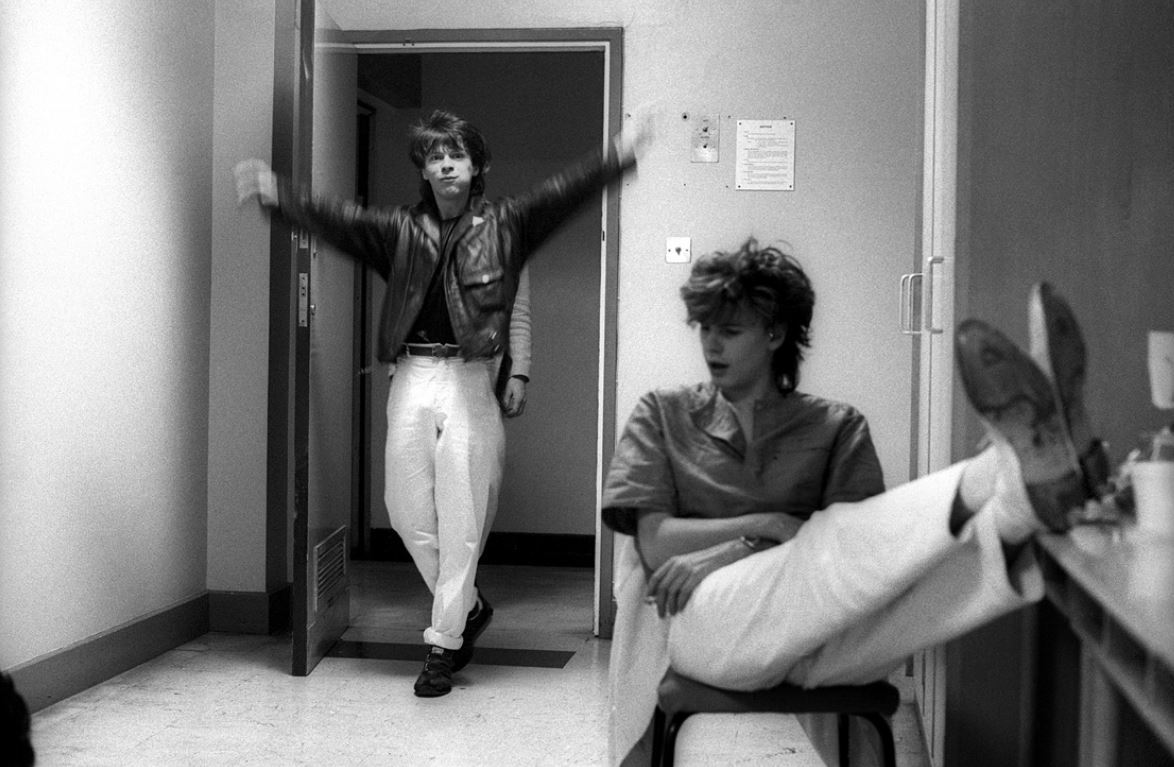
Che tipo di libro sarà?
L’idea è venuta fuori quando l’editore della collana mi ha chiamato per sapere se avevo un concetto. Tutti i loro libri sono in bianco e nero con edizioni limitate, un po’ nello spirito delle fanzine punk dell’epoca. Credo che a dicembre si saprà la data di lancio.
In che periodi hai lavorato con i Duran Duran?
Il periodo 1981-1983 è stato il mio triennio maggiore con loro. Ovviamente li ho incontrati dopo ad alcuni festival e premiazioni, ci salutiamo sempre. La mia prima session fu al Rum Runner club di Birmingham e ricordo che lì già parlavano di dominare il mondo. Erano giovani, belli, ideali per il mercato teen. Erano anche molto determinati e avevano un’idea precisa di come volevano il loro look e il loro sound. Avevano anche dei manager ambiziosi che li sostenevano.
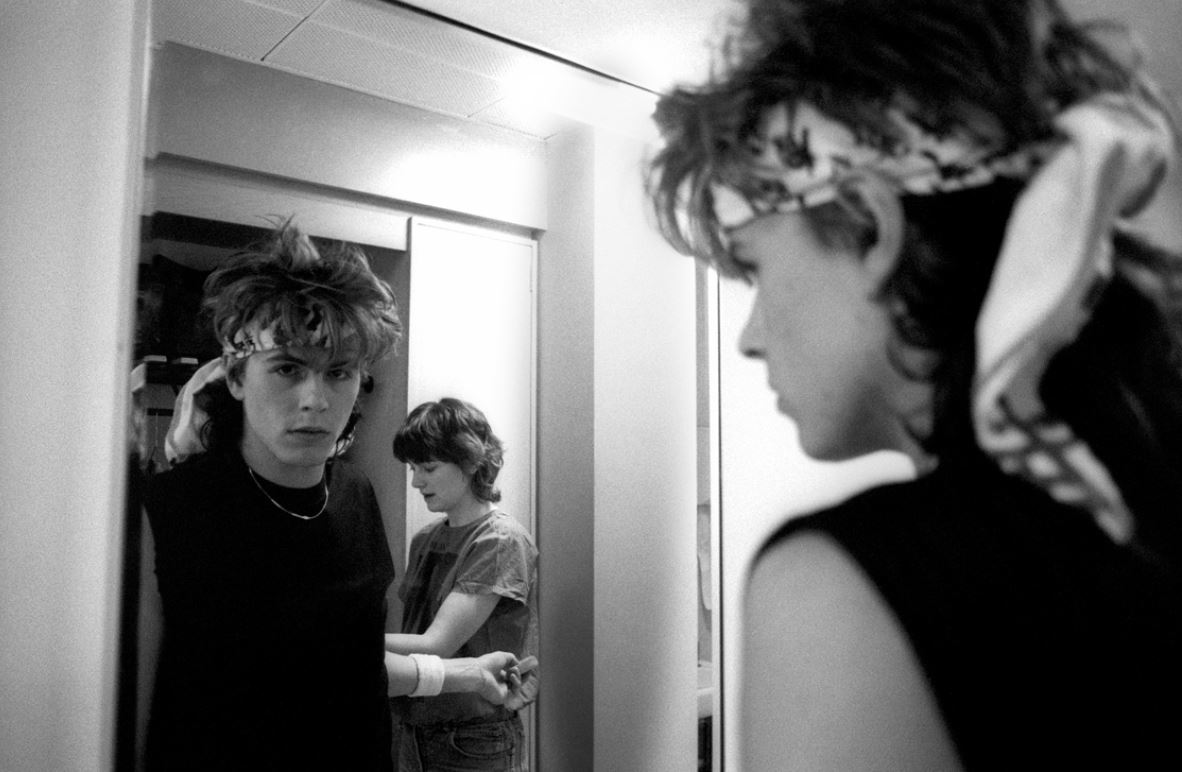
Cosa pensi di loro oggi?
Li rispetto per come son riusciti a durare 40 anni dopo molti saliscendi. Hanno scritto delle canzoni magnifiche come “Ordinary World”. Ma il mio gusto personale è frutto delle band degli anni Sessanta.
Duran Duran – Kings of the dark moon uscirà per hangingaroundbooks.com, la casa editrice con base a Dunbar in Scozia. Nell’articolo vedete i volumi dedicati ad altre star che sono già usciti (altri sono dedicati a Simple Minds, U2, The Clash). I libri sono in bianco e nero e di dimensione A5 in paperback. Tutti i libri sono un omaggio all’eredità della photozine Hanging Around, nata in pieno periodo punk nel 1977 dalla mente di Ronnie Gurr. Per molti, grazie alle sue PR, Gurr è il guru musicale che ha spinto negli anni 80 il successo di Culture Club e Simple Minds quando lavorava alla Virgin.
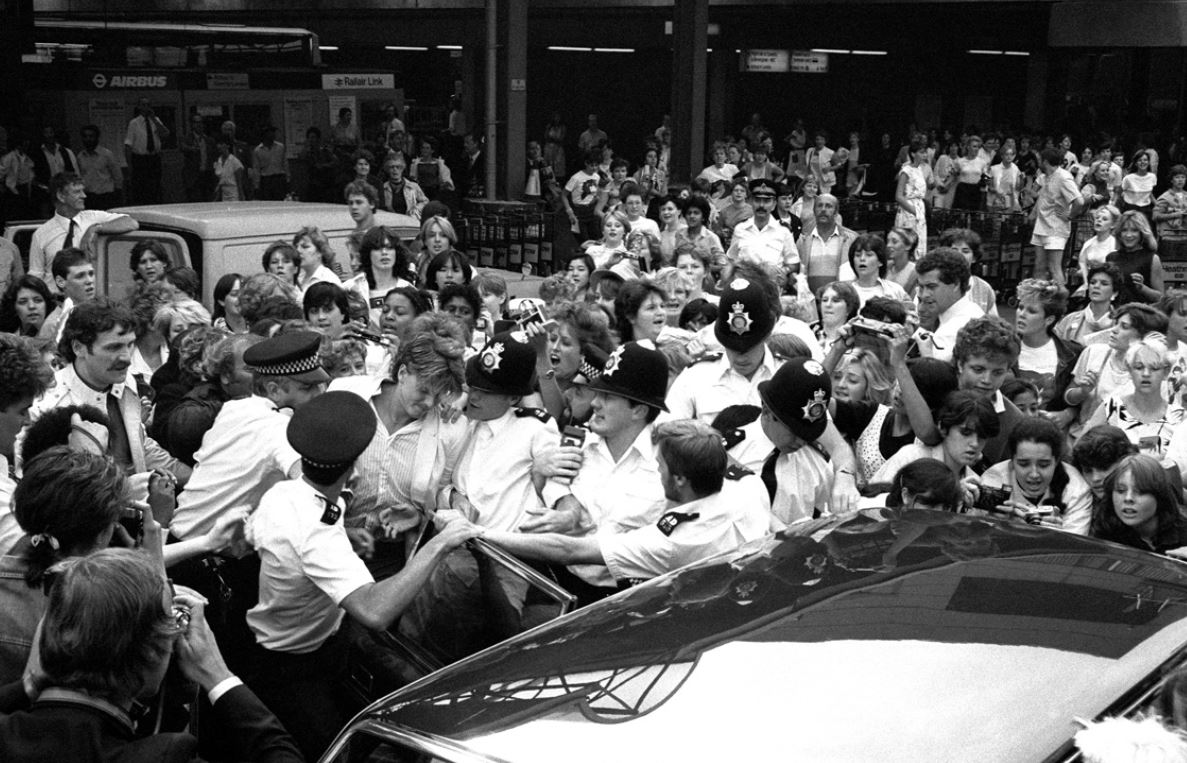
———————– ENGLISH TEXT ——————————————————————————————–
Justin Thomas left Caernarfon and began working for Sounds in 1978. As a photographer he has spent around 40 years documenting Punk, Rock ‘n’ Roll, and Britpop history through his pictures. His stunning exhibition “When You Hear The Music Trouble Disappear” features a treasure trove of unseen images featuring the Music World’s most acclaimed talent. He has worked for The Clash, The Rolling Stones.Stevie Wonder/Marvin Gaye/Diana Ross,Prince,Led Zeppelin,Bob Marley and the Sex Pistols. In later years he also photographed bands such as Nirvana, The Stone Roses, Blur,Michael Jackson,Madonna and Oasis.
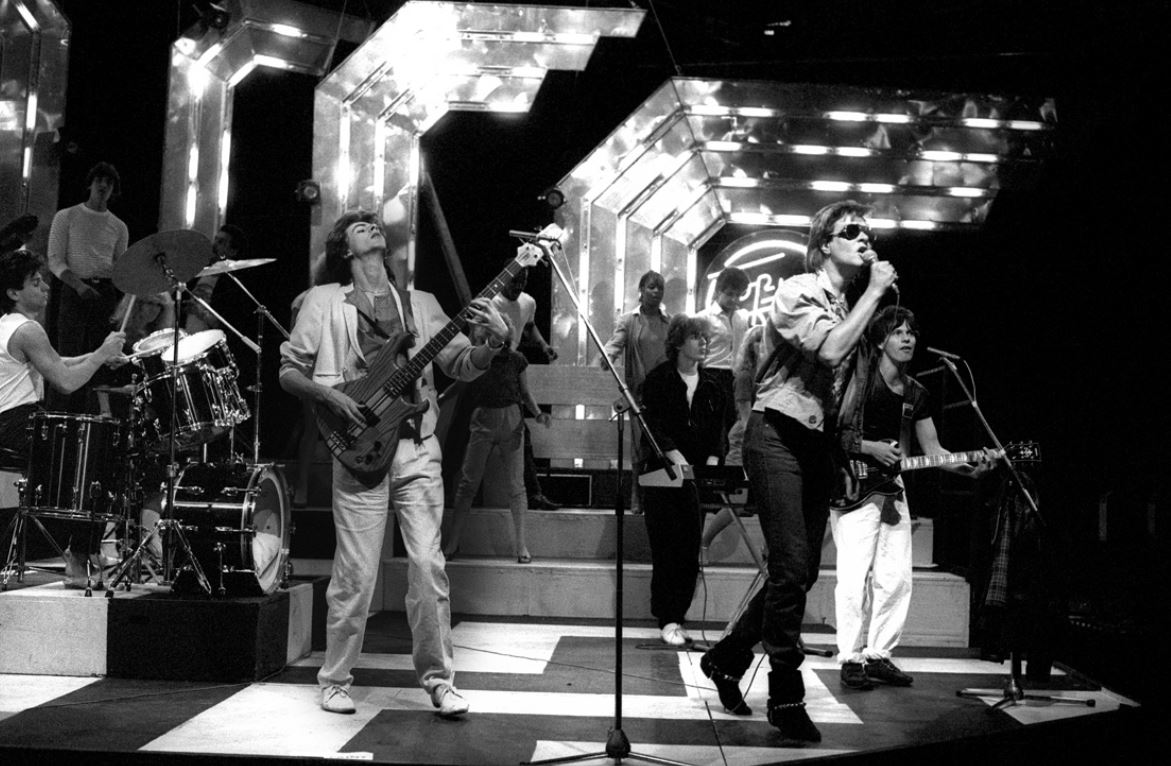
Kings of the dark moon is the title for his Duran Duran previously unseen photo book that he’s about to publish for Dunbar (Scotland) based HangingAroundBooks. The books are A5 sized paperback photobooks and photozines that carry on the legacy of Hanging Around – a punk fanzine that Ronnie Gurr founded in 1977. The first titles feature Simple Minds, U2, The Clash.
“When You Hear The Music Trouble Disappear” is the name of your exhibition in London: did you feel that way while photographing artists?
“WYHTMTD” is a line from The Rolling Stones song, “Can you hear the Music?” off the album ‘Goat’s Head Soup’. I chose it as the title for my exhibition at Graffik Gallery in Notting Hill ‘cos i LOVE The Stones, but mostly because music has always been a constant source of pleasure, surprise and excitement. I feel that way (WYHTMTD) when i listen to music, but NOT when i’m photographing artists. When you photograph artists, it’s the opposite: trouble APPEARS!
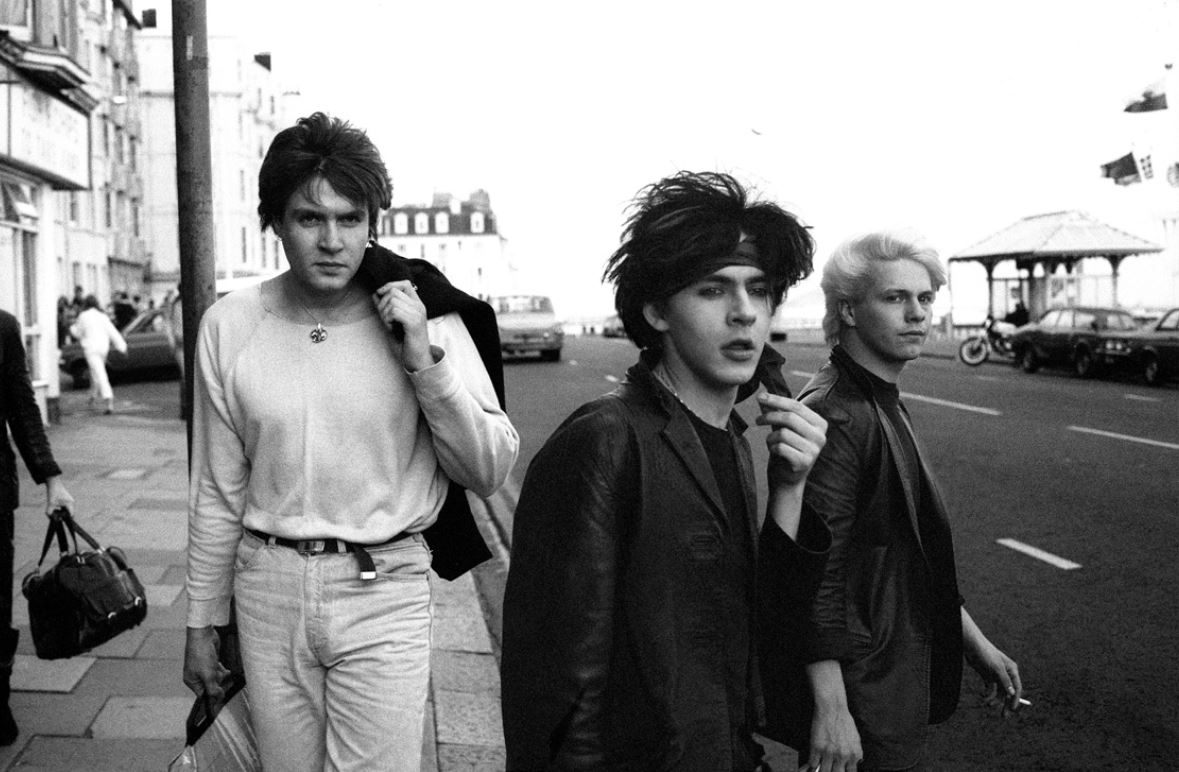
Is there any specific reason why you started your career?
My ‘career” was a happy accident, i had NO idea what i wanted to do with my life when i was young. There was no such thing as “Media studies’ and i certainly never heard about the job description,”Rock photographer”, when i was at school. From about the age of 10 I used to spend my pocket money on all the music magazines like Melody Maker, NME, Rave, etc, so maybe subconsciously i was getting more pleasure at looking at photos of my idols than i realised at the time.
Do you think attitude towards rock photography has changed with the online?
I think the MAIN difference between now and then is the lack of respect for copyright. When you gave your photo to a magazine it would be ONLY for that magazine, you wouldn’t see it turn up uncredited and unpaid in several other publications, as happens online. Notwithstanding the demise of the music business and ALL Art in general, i also think the internet will prove to be one of the worst inventions ever, because of the way it’s affecting human inter-action. I would rather sit with a quality magazine like Mojo in my lap than look at a site on my laptop. I like the feel of the paper in my hands, the smell of the print and to see the grain in the photos. I suppose it’s a generational thing?
Can you name some photographers in your field you respect and are friends with?
The photographers i respect are the ones whose photos i grew up with during the golden years of the’60’s & ’70’s; Jim Marshall, Baron Wolman, Henry Diltz, Barry Feinstein, Michael Cooper, Dezo Hoffman, Ethan Russell, Michael Putland, Bob Gruen.
Are you freinds with the stars?
You don’t really become friends with artists and other photographers. You share fun moments and spend brief time together, but when it’s over you go home to your real friends. Some photographers get caught up in the whole “Star” thing. They think because they’ve spent some time with a ‘Star’, they are now close friends. Maybe some do, but i prefer to keep the memories.
Punk, new wave, grunge, you were there to document. How audicences were different and ages differ from the 70’s to the 00’s in your opinion?
The most obvious way that audiences are different now to when i first started going to gigs is that we didn’t record it. We lived it, in the moment. We smoked weed and got drunk. We danced, we sweated and jumped around. We dropped Acid and freaked out. It was “Us” (Stoned Youngsters) against “Them” (Straight Old people). There was a Generation gap, It was more tribal. I hate going to gigs nowadays,it’s like a family outing;Mum & Dad tag along too. Apart from the ridiculous ticket prices, everyone has their mobile phones in the air and you have to stay in your specific seat-NO DANCING, NO SMOKING, overpriced drinks in plastic mugs.
Kings of the dark moon is very appropriate in my opinion for Duran Duran. How did you choose it ?
I think it’s not to be taken too literally. Duran got their name from the film, “Barbarella”. In the film, Jane Fonda is secretly the daughter of “the King of the Dark Moon”. I don’t think they have a “Dark” image at all. I think their image has always been glamorous.
Can you give readers an insight on how the book was conceived and how you managed to keep all those treasures for such a long time?
I remember the first time i met them how proud they were that NONE of them wore jeans!! Duran Duran were one of the 1st bands to exploit MTV with very expensive videos in exotic countries and girls with little clothing on. I have only just now started to slow down from taking photos. As well as the Music i have also been taking stills on Feature Films for 20 Years. I am now concentrating on digitalising all my Black and White Negatives and Colour Transparencies. I have always kept the copyright in my work. I was a freelance, never contracted to anybody. Copyright on your photos is the most important thing for a photographer. It’s what Royalties are to musicians. It was impressed on me early on, by another great Rock photographer, Robert Ellis, that I should always try and “keep some photos back” for my later years. I did. The book was conceived when the publishers rang me up and asked me if i had any ideas. All their books are limited edition Black and White photo books in the Punk “fanzine” spirit. www.hangingaroundbooks.com
What is your relationship with Duran Duran?
’81-83′ was the main period i had with them. I have met them from time to time at festivals and Award ceremonies and we always say “hello”. From the first session i had with them at The RumRunner club in Birmingham they were talking about World Domination. They were young and good looking , ideal for the teen market. They were very determined, had a clear idea about how they wanted to look and sound and had ambitious managers to back them up.
What do you think of them now?
I respect them for lasting 40 years, after a lot of ups and downs and they have written some great songs like “Ordinary World”, but my taste is born from the bands of the 1960’s.
